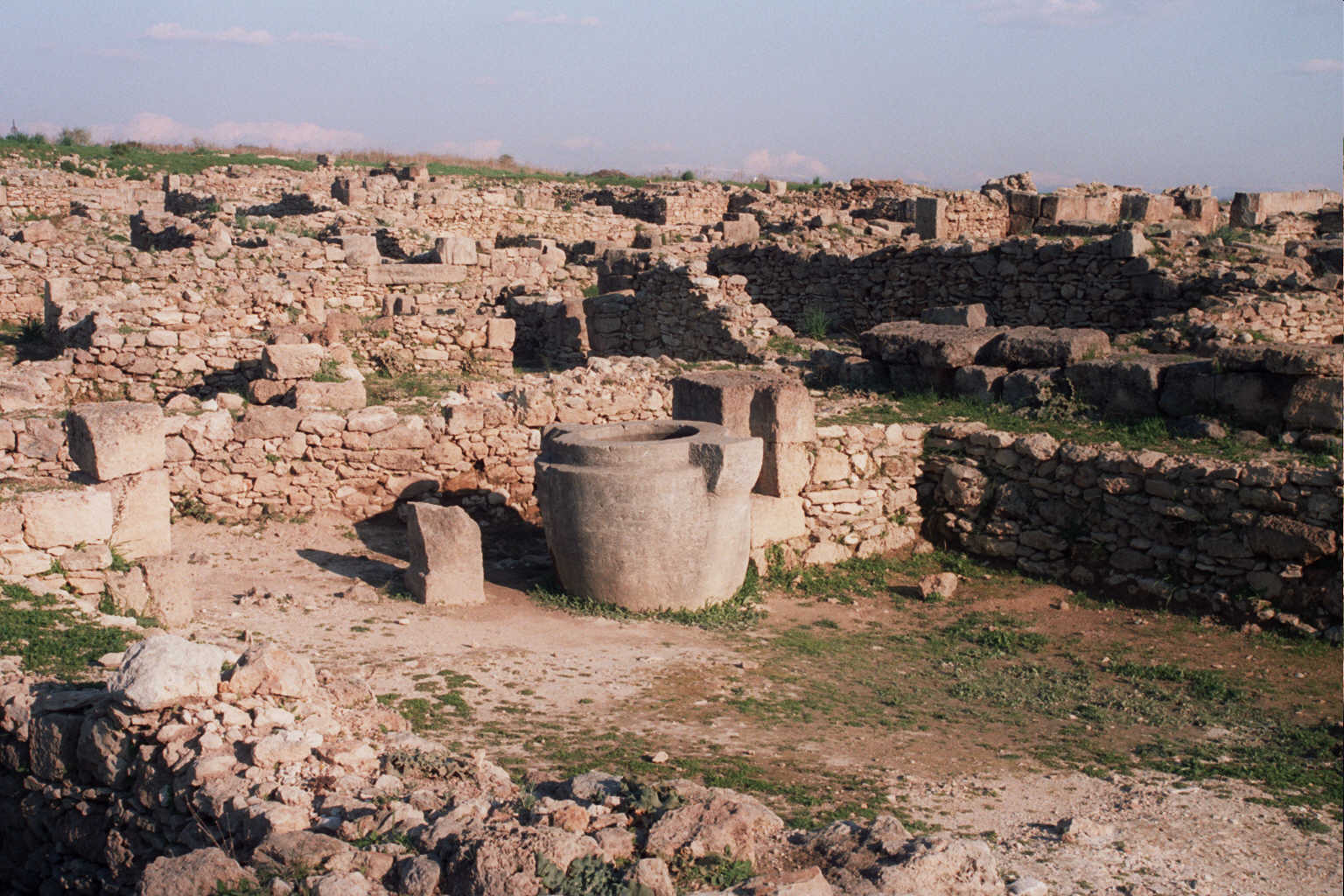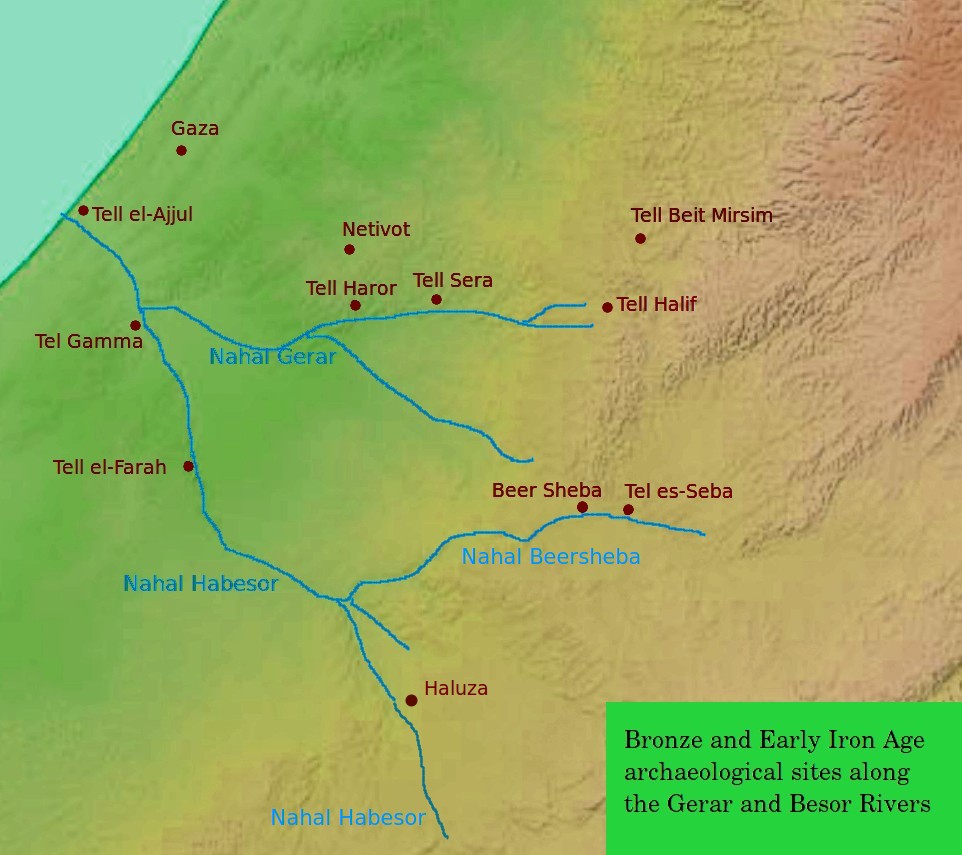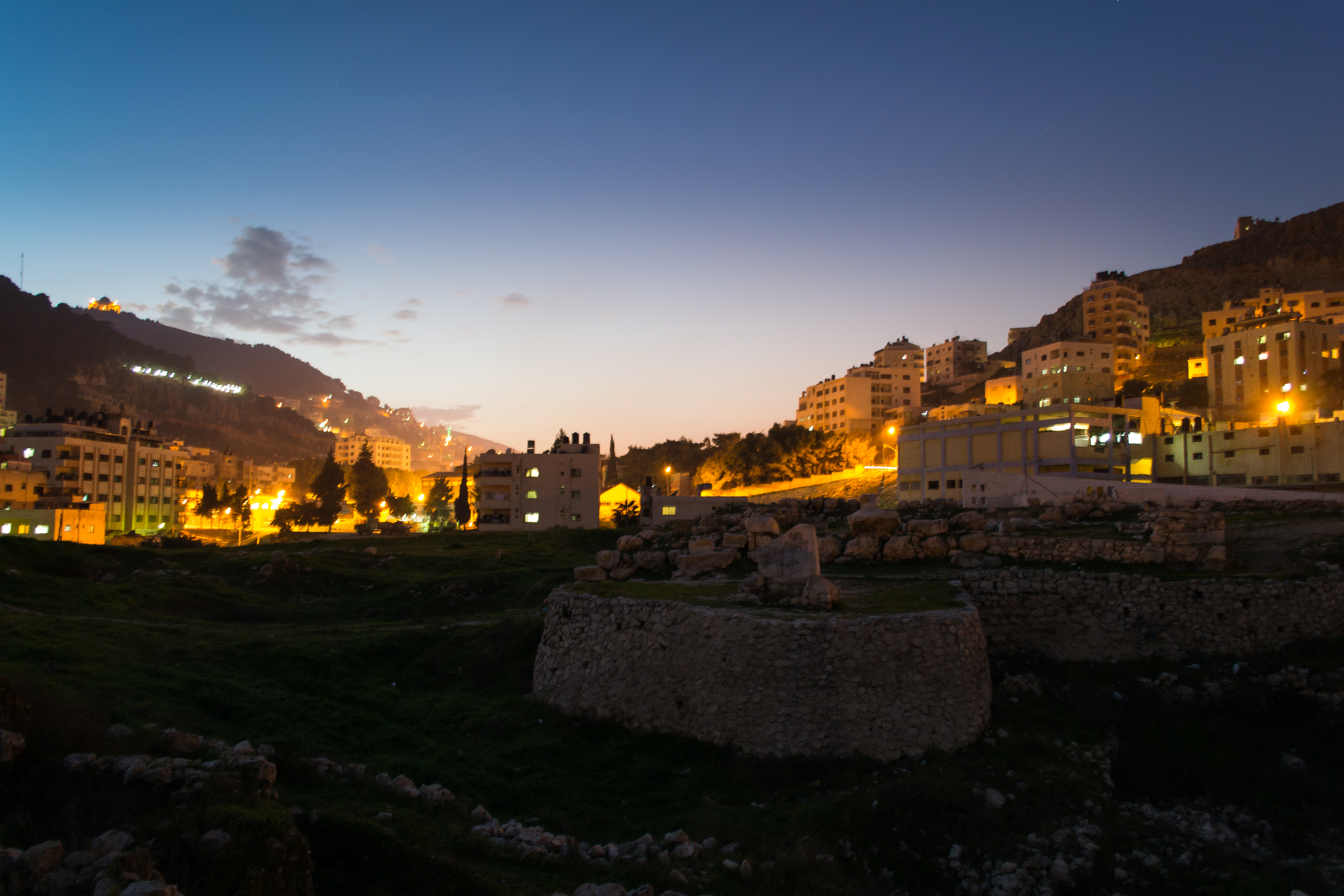|
Canaan
CanaanThe current scholarly edition of the Septuagint, Greek Old Testament spells the word without any accents, cf. Septuaginta : id est Vetus Testamentum graece iuxta LXX interprets. 2. ed. / recogn. et emendavit Robert Hanhart. Stuttgart : Dt. Bibelges., 2006 . However, in modern Greek, the accentuation is , while the Novum Testamentum Graece, current (28th) scholarly edition of the New Testament has . was an Ancient Semitic-speaking peoples, ancient Semitic-speaking civilization and region of the Southern Levant during the late 2nd millennium BC. Canaan had significant geopolitical importance in the Late Bronze Age Amarna Period (14th century BC) as the area where the sphere of influence, spheres of interest of the Egyptian Empire, Egyptian, Hittites, Hittite, Mitanni, and Assyrian Empires converged or overlapped. Much of present-day knowledge about Canaan stems from Excavation (archaeology), archaeological excavation in this area at sites such as Tel Hazor, Tel Megiddo, ... [...More Info...] [...Related Items...] OR: [Wikipedia] [Google] [Baidu] [Amazon] |
Canaanite Religion
Canaanite religion or Syro-Canaanite religions refers to the myths, cults and ritual practices of people in the Levant during roughly the first three millennia BC. Canaanite religions were polytheistic and in some cases monolatristic. They were influenced by neighboring cultures, particularly ancient Egyptian and Mesopotamian religious practices. The pantheon was headed by the god El and his consort Asherah, with other significant deities including Baal, Anat, Astarte, and Dagon. Canaanite religious practices included animal sacrifice, veneration of the dead, and the worship of deities through shrines and sacred groves. The religion also featured a complex mythology, including stories of divine battles and cycles of death and rebirth. Archaeological evidence, particularly from sites like Ugarit, and literary sources, including the Ugaritic texts and the Hebrew Bible, have provided most of the current knowledge about Canaanite religion. Sources and history Knowledge ... [...More Info...] [...Related Items...] OR: [Wikipedia] [Google] [Baidu] [Amazon] |
Canaanite Languages
The Canaanite languages, sometimes referred to as Canaanite dialects, are one of four subgroups of the Northwest Semitic languages. The others are Aramaic and the now-extinct Ugaritic and Amorite language. These closely related languages originated in the Levant and Upper Mesopotamia. Ancient Semitic-speaking peoples spoke them in an area encompassing what is today Israel, Palestine, Jordan, the Sinai Peninsula, Lebanon, Syria, as well as some areas of southwestern Turkey, Iraq, and the northwestern corner of Saudi Arabia. From the 9th century BCE, they also spread to the Iberian Peninsula and North Africa in the form of Phoenician. The Canaanites are broadly defined to include the Hebrews (including Israelites, Judeans, and Samaritans), Ammonites, Edomites, Ekronites, Hyksos, Phoenicians (including the Punics/Carthaginians), Moabites, Suteans and sometimes the Ugarites and Amorites. The Canaanite languages continued to be spoken languages until at least the 5th centur ... [...More Info...] [...Related Items...] OR: [Wikipedia] [Google] [Baidu] [Amazon] |
Phoenicia
Phoenicians were an Ancient Semitic-speaking peoples, ancient Semitic group of people who lived in the Phoenician city-states along a coastal strip in the Levant region of the eastern Mediterranean, primarily modern Lebanon and the Syria, Syrian coast. They developed a Maritime history, maritime civilization which expanded and contracted throughout history, with the core of their culture stretching from Arwad in modern Syria to Mount Carmel. The Phoenicians extended their cultural influence through trade and colonization throughout the Mediterranean, from Cyprus to the Iberian Peninsula, evidenced by thousands of Canaanite and Aramaic inscriptions, Phoenician inscriptions. The Phoenicians directly succeeded the Bronze Age Canaanites, continuing their cultural traditions after the decline of most major Mediterranean basin cultures in the Late Bronze Age collapse and into the Iron Age without interruption. They called themselves Canaanites and referred to their land as Canaan, but ... [...More Info...] [...Related Items...] OR: [Wikipedia] [Google] [Baidu] [Amazon] |
Tel Megiddo
Tel Megiddo (from ) is the site of the ancient city of Megiddo (; ), the remains of which form a tell or archaeological mound, situated in northern Israel at the western edge of the Jezreel Valley about southeast of Haifa near the depopulated Palestinian town of Lajjun and subsequently Kibbutz Megiddo. Megiddo is known for its historical, geographical, and theological importance, especially under its Greek name Armageddon. During the Bronze Age, Megiddo was an important Canaanite city-state. During the Iron Age, it was a royal city in the Kingdom of Israel. Megiddo's strategic location at the northern end of the defile of the Wadi Ara, which acts as a pass through the Carmel Ridge, and its position overlooking the rich Jezreel Valley from the west gave it much of its importance. Excavations have unearthed 20 strata of ruins since the Neolithic phase, indicating a long settlement period. The site is protected as Megiddo National Park and is a World Heritage Site. Et ... [...More Info...] [...Related Items...] OR: [Wikipedia] [Google] [Baidu] [Amazon] |
Gezer
Gezer, or Tel Gezer (), in – Tell Jezar or Tell el-Jezari is an archaeological site in the foothills of the Judaean Mountains at the border of the Shfela region roughly midway between Jerusalem and Tel Aviv. It is now an List of national parks and nature reserves of Israel, Israeli national park. In the Hebrew Bible, Gezer is associated with Joshua and Solomon. The archaeological site of Tel Gezer rises to an elevation of above sea-level, and affords a commanding prospect of the plains to the west, north and east. Gezer became a major fortified Canaanite city-state in the first half of the 2nd millennium BCE. It was later destroyed by fire and rebuilt. It is first mentioned in several Ancient Egypt, ancient Egyptian inscriptions. Its importance was due in part to the strategic position it held at the crossroads of the Via Maris, ancient coastal trade route linking Egypt with Syria, Anatolia and Mesopotamia, and the road to Jerusalem and Jericho, both important trade routes. I ... [...More Info...] [...Related Items...] OR: [Wikipedia] [Google] [Baidu] [Amazon] |
Ancient Semitic-speaking Peoples
Ancient Semitic-speaking peoples or Proto-Semitic people were speakers of Semitic languages who lived throughout the ancient Near East and North Africa, including the Levant, Mesopotamia, the Arabian Peninsula and Carthage from the 3rd millennium BC until the end of antiquity, with some, such as Arabs, Arameans, Assyrians, Jews, Mandaeans, and Samaritans having a continuum into the present day. Their languages are usually divided into three branches: East, Central and South Semitic languages. The Proto-Semitic language was likely first spoken in the early 4th millennium BC in Western Asia, and the oldest attested forms of Semitic date to the early to mid-3rd millennium BC (the Early Bronze Age). Speakers of East Semitic include the people of the Akkadian Empire, Ebla, Assyria, Babylonia, the latter two of which eventually switched to East Aramaic and perhaps Dilmun. Central Semitic combines the Northwest Semitic languages and Arabic. Speakers of Northwest Semitic were the ... [...More Info...] [...Related Items...] OR: [Wikipedia] [Google] [Baidu] [Amazon] |
Phoenician Language
Phoenician ( ; ) is an extinct language, extinct Canaanite languages, Canaanite Semitic language originally spoken in the region surrounding the cities of Tyre, Lebanon, Tyre and Sidon. Extensive Tyro-Sidonian trade and commercial dominance led to Phoenician becoming a lingua franca of the maritime Mediterranean Sea, Mediterranean during the Iron Age. The Phoenician alphabet History of the Greek alphabet, spread to Greece during this period, where it became the source of all modern Alphabet#European alphabets, European scripts. Phoenician belongs to the Canaanite languages and as such is quite similar to Biblical Hebrew and other languages of the group, at least in its early stages, and is therefore mutually intelligible with them. The area in which Phoenician was spoken, which the Phoenicians called ''Pūt'', includes the northern Levant, specifically the areas now including Syria, Lebanon, the Galilee, Western Galilee, parts of Cyprus, some adjacent areas of Anatolia, and, a ... [...More Info...] [...Related Items...] OR: [Wikipedia] [Google] [Baidu] [Amazon] |
Tel Hazor
Tel Hazor (), translated in LXX as Hasōr (), and in Arabic Tell Waqqas or Tell Qedah el-Gul (), is an archaeological Tell (archaeology), tell at the site of ancient Hazor, located in the Upper Galilee, north of the Sea of Galilee, in the northern Korazim Plateau. From the Middle Bronze Age (around 1750 BCE) to the Iron Age (ninth century BCE), Hazor was the largest fortified city in the region and one of the most important in the Fertile Crescent. It maintained commercial ties with Babylon and Syria, and imported large quantities of tin for the bronze industry. In the Book of Joshua, Hazor is described as "the head of all those kingdoms" () and archaeological excavations that have emphasized the city's importance. The Hazor expedition, headed by Yigael Yadin in the mid-1950s, was the most important dig undertaken by Israel in its early years of statehood. Tel Hazor is the largest archaeological site in northern Israel, featuring an upper tell of 30 acres and a lower city of more ... [...More Info...] [...Related Items...] OR: [Wikipedia] [Google] [Baidu] [Amazon] |
Philistia
Philistia was a confederation of five main cities or pentapolis in the Southwest Levant, made up of principally Gaza, Ashkelon, Ashdod, Ekron, Gath, and for a time, Jaffa (part of present-day Tel Aviv-Yafo). Scholars believe the Philistines were made up of people of an Aegean background that from roughly 1200 BC onwards settled in the area and mixed with the local Canaanite population, and came to be known as '' Peleset'', or Philistines. At its maximum territorial expansion, its territory may have stretched along the Canaanite coast from Arish in the Sinai (today's Egypt) to the Yarkon River (today's Tel Aviv), and as far inland as Ekron and Gath. Nebuchadnezzar II invaded Philistia in 604 BC, burned Ashkelon, and incorporated the territory into the Neo-Babylonian Empire; Philistia and its native population the Philistines disappear from the historic record after that year. History Ancient Egyptian hieroglyphic records from the New Kingdom period record a group of ... [...More Info...] [...Related Items...] OR: [Wikipedia] [Google] [Baidu] [Amazon] |
Jericho
Jericho ( ; , ) is a city in the West Bank, Palestine, and the capital of the Jericho Governorate. Jericho is located in the Jordan Valley, with the Jordan River to the east and Jerusalem to the west. It had a population of 20,907 in 2017. From the end of the era of Mandatory Palestine, the city was Jordanian annexation of the West Bank, annexed and ruled by Jordan from 1949 to 1967 and, with the rest of the West Bank, has been subject to Israeli occupation of the West Bank, Israeli occupation since 1967; administrative control was handed over to the Palestinian Authority in 1994. Jericho is among the List of oldest continuously inhabited cities, oldest cities in the world,Murphy-O'Connor, 1998, p. 288.Freedman et al., 2000, p. 689–671. and it is also the city with the oldest known defensive wall.Michal Strutin, ''Discovering Natural Israel'' (2001), p. 4. Archaeology, Archaeologists have unearthed the remains of more than 20 successive settlements in Jericho, the first of ... [...More Info...] [...Related Items...] OR: [Wikipedia] [Google] [Baidu] [Amazon] |
Shechem
Shechem ( ; , ; ), also spelled Sichem ( ; ) and other variants, was an ancient city in the southern Levant. Mentioned as a Canaanite city in the Amarna Letters, it later appears in the Hebrew Bible as the first capital of the Kingdom of Israel (Samaria), Kingdom of Israel following the split of the Kingdom of Israel (united monarchy), United Monarchy. According to , it was located in the tribal territorial allotment of the tribe of Ephraim. Shechem declined after the fall of the Kingdom of Israel (Samaria), northern Kingdom of Israel. The city later regained its importance as a prominent Samaritans, Samaritan center during the Hellenistic Palestine, Hellenistic period. Traditionally associated with the city of Nablus, Shechem is now identified with the nearby site of Tell Balata in the Balata al-Balad suburb of the West Bank. Geographical position Shechem's position is indicated in the Hebrew Bible: it lay north of Bethel and Shiloh (Biblical city), Shiloh, on the high road ... [...More Info...] [...Related Items...] OR: [Wikipedia] [Google] [Baidu] [Amazon] |
Southern Levant
The Southern Levant is a geographical region that corresponds approximately to present-day Israel, Palestine, and Jordan; some definitions also include southern Lebanon, southern Syria and the Sinai Peninsula. As a strictly geographical description, it is sometimes used by archaeologists and historians to avoid the religious and political connotations of other names for this area. Like much of Southwestern Asia, the Southern Levant is an arid region consisting mostly of desert and dry steppe, with a thin strip of wetter, temperate climate along the Mediterranean coast. Geographically it is dominated by the Jordan Valley, a section of the Great Rift Valley bisecting the region from north to south, and containing the Sea of Galilee, the Jordan River and the Dead Sea—the lowest point on the Earth's land surface. The Southern Levant has a long history and is one of the world's most intensively investigated areas by archaeologists. It is considered likely to be the first place ... [...More Info...] [...Related Items...] OR: [Wikipedia] [Google] [Baidu] [Amazon] |








